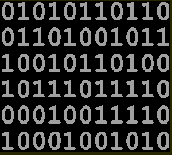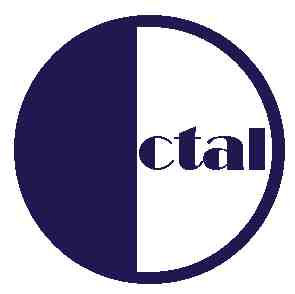-
 The
number of digits available dictates how many messages
can be transmitted. For example, suppose I had two (2) decimal (i.e., 0, 1, 2,
3, 4, 5, 6, 7, 8, 9) digits available, and I could use them in any combination
(I could have 08, 99, 83, 71, or any other combination of digits). The
number of digits available dictates how many messages
can be transmitted. For example, suppose I had two (2) decimal (i.e., 0, 1, 2,
3, 4, 5, 6, 7, 8, 9) digits available, and I could use them in any combination
(I could have 08, 99, 83, 71, or any other combination of digits).
- In decimal, we could calculate the maximum number of
combinations as:
| Number of Digits |
Value (number
Messages) |
Exponential
Representation |
| 1 |
10 (0 .. 910) |
101 |
| 2 |
100 (0 .. 9910) |
102 |
| 3 |
1,000 (0 .. 99910) |
103 |
| 4 |
10,000 (0 .. 9.99910) |
104 |
| 5 |
100,000 (0 .. 99.99910) |
105 |
| 10 |
10,000,000,000 |
1010 |
-
 Notice
that the power to which we must raise the base (in this case, base 10)
indicates how may digits are available: Notice
that the power to which we must raise the base (in this case, base 10)
indicates how may digits are available:
| Number of Digits |
Value (number
Messages) |
Exponential
Representation |
| 1 |
2 (0 .. 12) |
21 |
| 2 |
4 (0 .. 112) |
22 |
| 3 |
8 (0 .. 1112) |
23 |
| 4 |
16 (0 ..11112) |
24 |
| 5 |
32 (0 .. 111112) |
25 |
| 10 |
1,024 (0 .. 11111111112) |
210 |
- The General Formula is:
I = Bn
|
where |
I = The amount of information (message) available. |
| |
B = The base we are working in (Decimal or Binary)
n = The number of digits (Decimal or bits) we have
|
-
 As
Stated, this works for ANY Base. Suppose that we wished
to calculate how many representations (combinations) we would have if we could
only use the digits 0, 1, 2, 3, 4, 5, 6, 7 (i.e., we had only 8 digits to work
with) As
Stated, this works for ANY Base. Suppose that we wished
to calculate how many representations (combinations) we would have if we could
only use the digits 0, 1, 2, 3, 4, 5, 6, 7 (i.e., we had only 8 digits to work
with)
| Number of Digits |
Value (number
Messages) |
Exponential
Representation |
| 1 |
8 (0 .. 78) |
81 |
| 2 |
64 (0 .. 778) |
82 |
| 3 |
512 (0 .. 7778) |
83 |
| 4 |
4,096 (0 ..77778) |
84 |
| 5 |
32, 768 (0 .. 77778) |
85 |
| 10 |
1,073,741,824
|
810 |
Why
would I care about Base 8 ???
Stay tuned --- We will get to that
Some good references include:
-
How Bits and Bytes Work
-
Data
Structures And Number Systems
- Bits
and Bytes : An Explanation
At this point in time, you should be
able to Answer the following questions:
- How do the number of digits I have influence how
many different combinations of digits I can have?
Answer: The number of
digits available dictates how many different combinations there are. For
example if I could use up to three decimal (base 10) digits, the maximum
number of combinations I could have would be 103 = 1,000. That is,
I could represent all of the numbers from 000 to 999. If I had 4 binary digits
(bits), The maximum number of combinations I could have would be 24
= 16.
- If I had 7 different light
switches, how many different combinations of on/off switches would I have?
a. 7
b. 14
c. 49
d. 128
e. 10000000
(answer: d since 27
= 128)
- Suppose I were working in Base 5,
and I had only the digits 0, 1, 2, 3, and 4 (a total of 5 digits) to work
with. If I could combine any 3 of these digits, what is the maximum number of
combinations I could have?
a. 5
b. 32
c. 125
d. 1000
e. 3125
(answer: c since 53
= 125)
This page was last updated on
08/16/06
|

 CIS3355:
Business Data Structures
CIS3355:
Business Data Structures